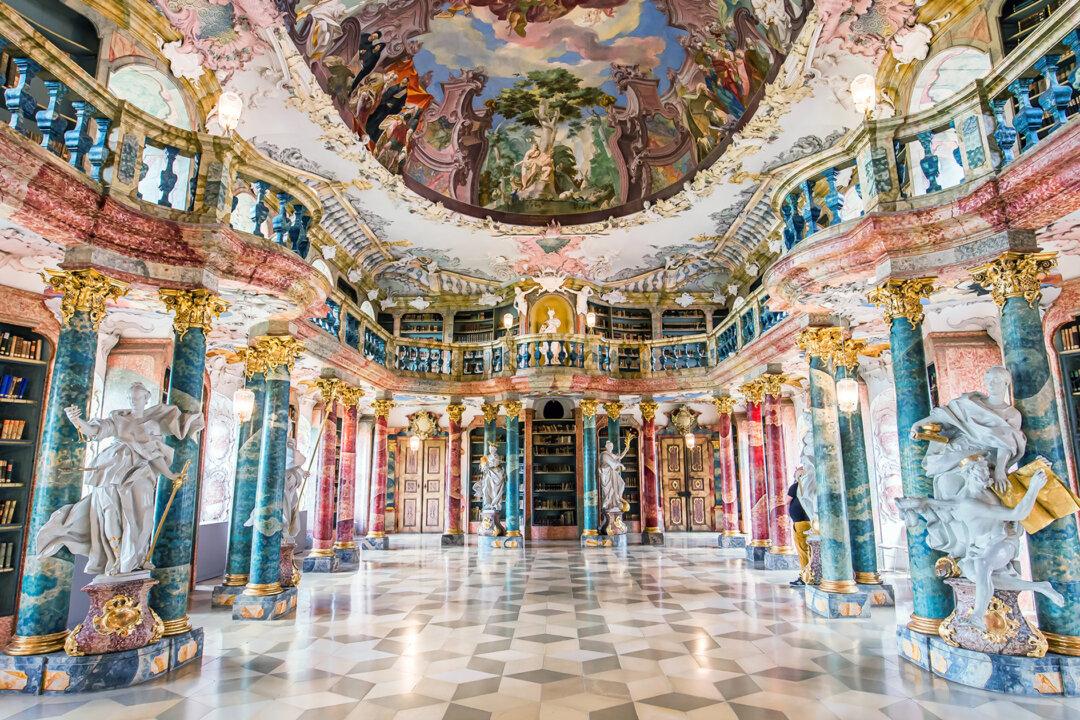An elaborate two-story rococo hall inside an 11th-century abbey is so ornate that it is considered one of the world’s most beautiful libraries.
Wiblingen Abbey is a grand monastery located south of the city of Ulm in the south German state of Baden-Württemberg. It was founded in 1093 for the Benedictine monks. It became widely renowned for its discipline, in particular its “scriptorium,” a room where the monks produced highly detailed, illustrated works of literature.





